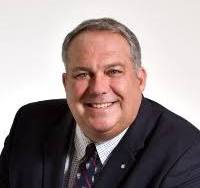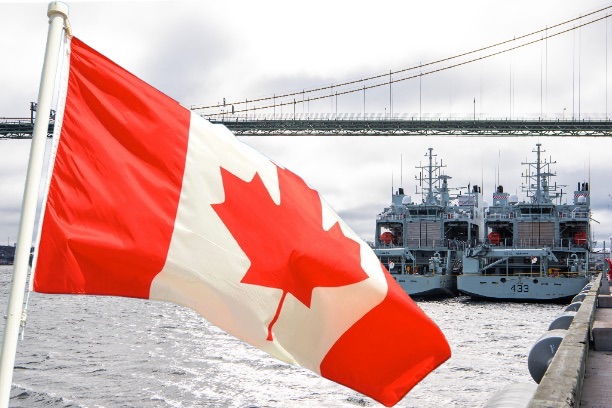World Geostrategic Insights interview with Joe Varner on the main threats to Canada’s National Security; the current capability of the Canadian Defense Forces; advisable approaches and strategies to strengthen the security; the impact of the new Trump Administration on the U.S.-Canada relations; Canadian policy in the Arctic; and whether Canada should increase its engagement in the Indo-Pacific region.

Joe Varner is a senior fellow at the Macdonald-Laurier Institute.
Q1 – In recent decades, Canada has essentially outsourced its defense and national security to the United States. National security issues have taken a back seat in the political debate, neglected by Canadian political leaders and the public. And despite the deterioration of the world geopolitical scenario in recent years, a degree of disinterest in national defense has persisted, even resulting in a reluctance to strengthen military defense capabilities. What are the reasons for this attitude? Have the challenges to Canada’s national security been underestimated? In your opinion, what are the main threats to Canada’s security? From which countries do these threats come? What forms do they take?
A1 – Until the last two years or so, the Trudeau government and successive governments of all political stripes have viewed defence spending as discretionary with the view that the US and NATO will defend us. Canadians have valued social programs over defence spending and there was a political view that there are no votes in defence or foreign policy. The global situation and the Trump administration have started to focus on the Canadian mindset, and it is slowly changing. But we still spend about 1.4 percent of GDP on defence, and the current Prime Minister is not in any rush to get to 2 percent of GDP before 2030.
Canadians for a long time despite Russia’s military build-up in the Arctic and China’s interest in the region believed that we were a country with no natural predators protected by geography and the US. But Canada faces a variety of national security threats. Organized crime has in the past presented many challenges to Canadian security. We have held a public inquiry into foreign influence activity that focuses on India, China, and Iran. Canada faces threats from State-sponsored terror by Iran, Islamic and Sikh extremism, and other terrorist factions. Like other NATO member countries, we have been faced with Russian military threats to our Arctic, compounded by China’s interest in the region. While most Canadians are not aware, Russia, China, and North Korea view North America as an integrated target set.
Canada does not have the ability to protect itself from foreign influence operations, hybrid warfare, or direct military threats from Russia, China, and North Korea without the assistance of the US, a major sore point with our allies and the Trump administration. We are the ‘Achilles heel’ of NATO’s northern flank and North America.
Q2 – Mark Carney, former governor of the Bank of Canada and the Bank of England, officially took office as Canada’s new premier, succeeding Justin Trudeau. Carney promised to address some of the most pressing issues facing Canada, including climate change, social inequality, and economic recovery. He said his government will focus on creating sustainable jobs and implementing policies that promote social justice and inclusion. Regarding Canada’s national security, also understood as military defense, what is Carney’s vision and plans?
A2 – So far Prime Minister Carney has pledged to buy new submarines, drones and more heavy-duty icebreakers while increasing pay for Canadian Armed Forces (CAF) personnel. But he has not provided cost or details on the number platforms. Carney committed to reach 2 percent of GDP in terms of Defence spending before 2030. But he has called for a review of the F-35 fighter program and foreign military sales with the US putting the P-8 maritime patrol aircraft at risk as well. If you are trying to rebuild the CAF and increase defence spending these are not good signs. The lack of details on his announcement smack of electioneering more than a commitment to national defence.
Q3 – How do you assess the current capability of the Canadian Defense Forces? What should be Canada’s overall approach and strategy to strengthen national security?
A3 – So, I am afraid the news here is not good. The Canadian military is about 15,000 people short of its establishment. CAF members are part of the Liberal government’s so-called woke policies that have not stemmed the recruiting and retention crisis.
The Royal Canadian Navy has 30-year-old frigates and 40-year-old submarines and rust out before replacement is very concerning. The submarines spend more time out of the water than in the water on patrol and can only operate safely around the Arctic ice pack. The frigates have increasing ‘smoking incidents and maintenance issues. The navy’s only support ship is a militarized commercial vessel that cannot enter combat. The Arctic Off-Shore Patrol Ships (AOPS) and Maritime Coastal Defence Vessels (MCDVs) are only suitable for constabulary operations and will not survive in a combat environment.
The Royal Canadian Air Force on paper up until Prime Minister Carney’s F-35 and Foreign Military Sale review looked to be on the way to being recapitalized. An Air Force without a fighter fleet is not an Air Force and Canada’s CF-18 fighter fleet is worn out and its electronic warfare suite for defence obsolete. It is no longer a frontline fighter fleet.
The Canadian Army is a shadow of its former self and lacks modern air and anti-tank defence, drone and counter-drone and a communications, command, and control system. We have less than about six days of artillery shell supply, well short of the NATO requirement, and lack artillery capabilities. We have lost our edge in Arctic and winter warfare. All its surplus winter warfare equipment and anything spare has been sent to Ukraine and has not been replaced and its new Arctic sleeping bags are not sufficient for the Canadian climate.
On a positive note, Canada has some valuable space-based assets, and our Special Forces are top-tier world-class, but we just don’t have enough of them.
Canada’s latest Defence Policy Update focuses on Canada’s Arctic and NATO’s northern flank but is unfunded.
The Liberal government has allowed the CAF to deteriorate to an alarming state. In summary, it will take several years to rebuild the CAF into real combat capabilities.
Q4 – Canada’s defense and security policy, as well as economy, has always been based on the American-Canadian partnership. The two countries have close ties, and converging interests. What will be the impact of the new Trump Administration on the U.S.-Canada relations?
A4 – You have asked the million-dollar question. Canada is locked in a trade war with the US which is having a significant impact on the Canadian-US partnership and Canadians are very upset. The Prime Minister and the Leader of the Opposition now locked in a General election have threatened retaliatory tariffs. But there are now larger questions about major military procurement programs like the F-35 and P-8 and even questions about the future of NORAD and Canadian participation in the Five Eyes. Carney said, “The old relationship we had with the US based on deepening integration of our economies and tight security and military cooperation is over.” But Carney was more optimistic after what he called a “constructive” call with US President Donald Trump, so we will see.
Q5 – Canada is one of the countries with the most Arctic territory, second only to Russia; the Arctic affects about 40 percent of Canadian territory and 75 percent of the coastline. Canada is increasing its military presence in the Arctic, presumably aiming to counter Russia and China, through the deployment of patrol ships, destroyers, icebreakers, and submarines capable of operating under the ice sheets, as well as the use of new drones and aircraft. How do you assess Canadian policy in the Arctic?
A5 – As I said, Canada’s latest Defence Policy Update focuses on Canada’s Arctic and NATO’s northern flank but is unfunded. The CAF is without the modern systems to operate in the far north like modern submarines, P-8 maritime patrol aircraft, AWACs or F-35 fighter planes. We have the CAF Arctic Training Centre (CAFATC) in Resolute Bay, Nunavut, a signal listening post at Alert, and a naval facility Nanisivik on Baffin Island Nunavut. NORAD maintains forward operating locations (FOLs) in the Canadian Arctic, including Inuvik, Yellowknife, Iqaluit, and Goose Bay but for the most part they are leased commercial facilities at civilian airports the exception being Goose Bay.
We have approximately 5,000 Canadian Rangers living in more than 200 communities who speak 26 different languages and dialects that provide an on the ground presence and who provide situational awareness. We have several Arctic Off-Shore Patrol Ships (AOPs) but they are constabulary at best. Canada is looking at new diesel electric submarines that can operate around the ice pack and along naval chokepoints, but they won’t be operating under the ice pack. NORAD modernization to face a plethora of modern air, sea and space-based threats is dragging because of a long delay by Canada. In real terms even though we have a stated policy to focus on the Arctic and NATO’s northern flank it is not funded, we are weak on the ground and lack systems to operate in a very challenging environment.
The Conservative Leader and Leader of the Opposition now in an election campaign, Pierre Poilievre has promised, if his party forms government, to build a military base in Canada’s Arctic, buy two polar icebreakers for the Royal Canadian Navy and double the size of the Canadian Rangers patrol group. The Conservatives envision a major military base in Iqaluit to host a full air wing, of new F-35 fighter jets and Poseidon P-8 maritime patrol aircraft. Iqaluit is already home to a NORAD forward operating base and as-needed deployment facility including an aircraft hangar. The city also has a civilian airport and seaport.
Q6 – Should Canada develop its security policy in the Indo-Pacific region?
A6 – Canada in fact has an Indo-Pacific Strategy unveiled in 2022. The Indo-Pacific Strategy recognized that Canada must increase engagement in the Indo-Pacific region as a security partner to protect our national interests and outlined several initiatives to position Canada as a positive force for regional stability. It was a document rooted in realism and that recognized China as the major global security challenge. But very sadly Canada has only limited hard power to play in the Indo-Pacific region. On paper we have six frigates, two diesel-powered submarines and seven minor vessels and a small number of CP-140 Aurora maritime patrol aircraft. Canada could at most sortie that force and perhaps sustain three frigates and a submarine but that is likely just wishful thinking. Like all Canadian policy and strategy documents they are long on aspirations and short on real capability and geared for communications to Canadians and allies and not for action.
Joe Varner – Senior fellow at the Macdonald-Laurier Institute.







